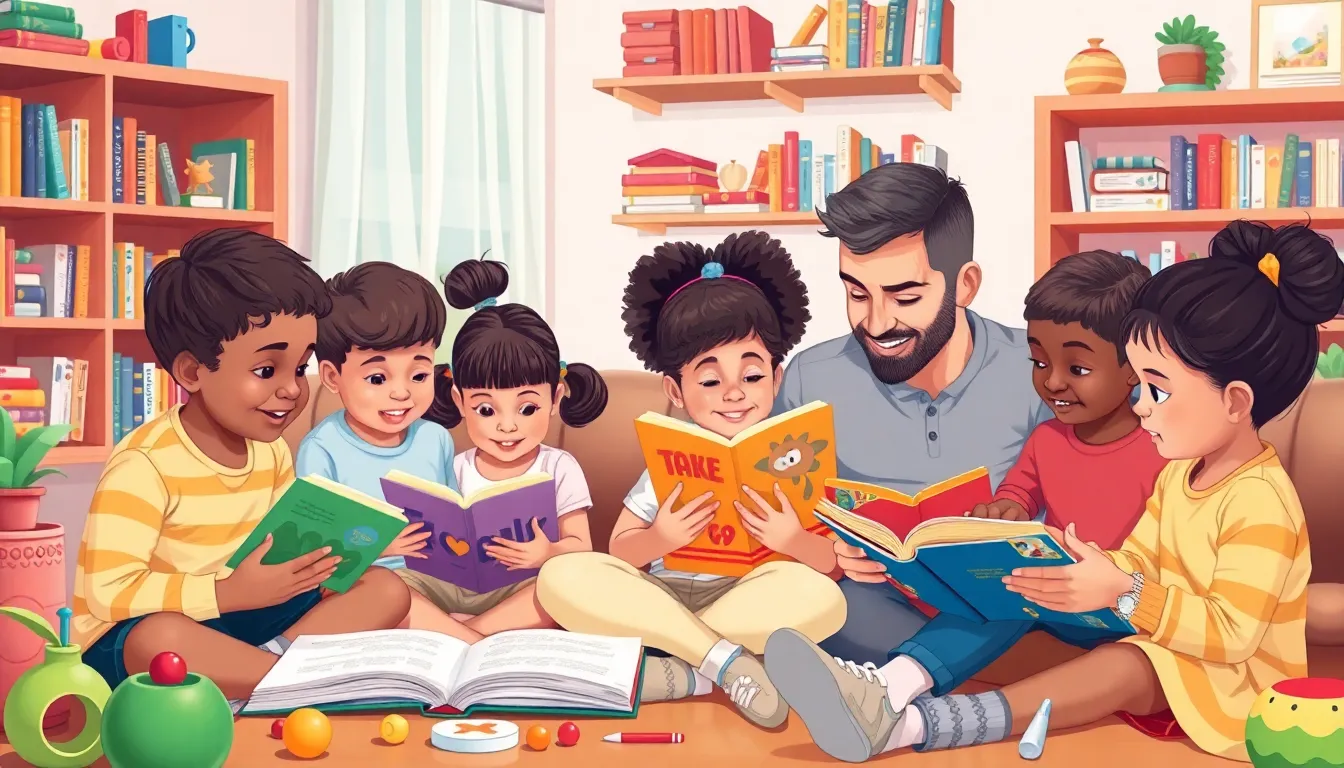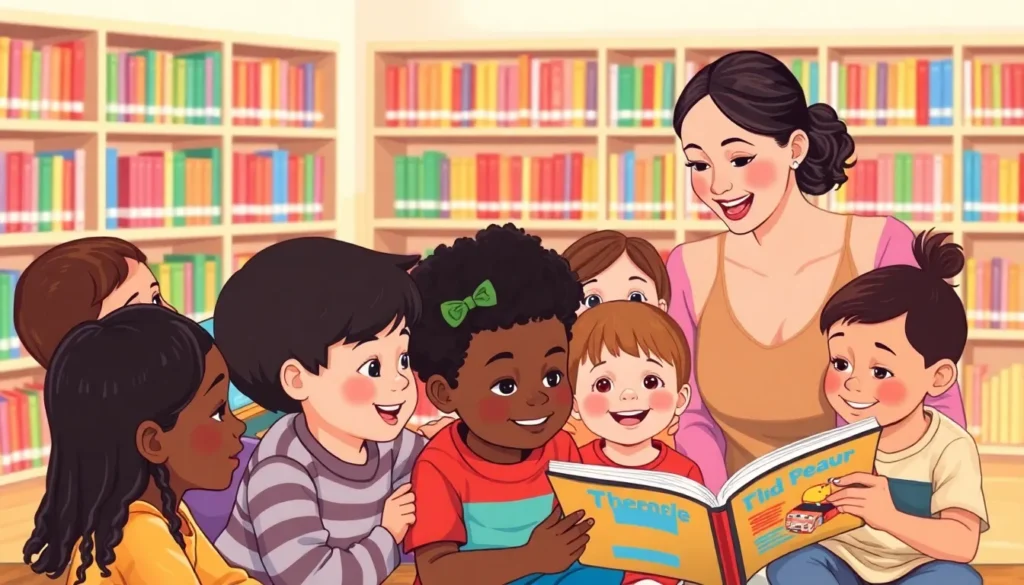In a world where screens often steal the spotlight, nurturing children’s literacy might seem like an uphill battle. Yet, unlocking the magic of reading can transform kids into curious explorers, ready to embark on adventures that don’t require Wi-Fi. Imagine a child flipping through pages, captivated by tales of daring knights or whimsical creatures—each story a stepping stone to a brighter future.
Literacy isn’t just about reading and writing; it’s the key to understanding the world. When children grasp the power of words, they gain the confidence to express themselves and tackle challenges head-on. So, let’s dive into the enchanting realm of children’s literacy, where every book opened is a new door waiting to be discovered. After all, who wouldn’t want their child to be the next literary superhero?
Table of Contents
ToggleUnderstanding Children Literacy
Children literacy encompasses the abilities of reading, writing, and comprehension that enable children to engage with their environment and communicate effectively. Fostering literacy skills in early childhood significantly impacts their academic and social development.
Definition and Importance
Literacy is the ability to read and write, serving as a foundation for learning. Understanding this skill is vital for personal growth, as it equips children to navigate everyday tasks and engage with diverse information. Research shows that children with strong literacy skills perform better academically and exhibit higher self-esteem. Encouraging literacy at an early age cultivates critical thinking, making children more adept at problem-solving and decision-making.
Key Components of Literacy
Key components of literacy include phonemic awareness, vocabulary, reading fluency, and comprehension. Phonemic awareness involves recognizing and manipulating sounds in words, forming the basis for reading. Vocabulary encompasses knowing and using words effectively, crucial for expressing ideas and understanding texts. Reading fluency refers to the ability to read smoothly and accurately, while comprehension focuses on grasping the meaning of what is read. Each component interconnects, reinforcing literacy development and promoting a profound appreciation for reading.
Factors Influencing Children Literacy

Multiple factors influence children’s literacy development. Understanding these elements can enhance approaches to promoting literacy skills in young learners.
Socioeconomic Status
Socioeconomic status significantly impacts access to resources essential for literacy. Children from higher socioeconomic backgrounds often enjoy greater exposure to books and educational materials. Limited access to these resources for those in lower socioeconomic families creates disparities in literacy development. Research shows that such disparities correlate with lower literacy scores and reduced academic performance. Schools in lower-income areas may lack funding for vital literacy programs, further widening the gap. Addressing this issue requires community support and resource allocation to ensure that all children receive equal opportunities for literacy growth.
Parental Involvement
Parental involvement plays a crucial role in children’s literacy success. Engaged parents frequently read with their children, fostering a love for books early on. Regular family reading time facilitates vocabulary expansion and comprehension skills. Research indicates that children whose parents actively participate in their literacy education perform better academically. Parents can enhance literacy by providing positive reading experiences and accessing library resources. Communication about school activities also strengthens children’s confidence in their abilities, reinforcing the importance of a supportive home environment for literacy development.
Effective Strategies to Promote Children Literacy
Promoting children’s literacy requires targeted strategies that engage and inspire young readers. Effective methods cultivate a love for reading and enhance literacy skills through various avenues.
Reading Programs
Reading programs play a vital role in developing children’s literacy. Schools and libraries often provide structured reading programs that include book clubs, story hours, and summer reading challenges. These initiatives encourage children to explore diverse genres and authors, expanding their literary exposure. Research from the National Reading Panel emphasizes the effectiveness of early interventions, such as guided reading sessions, in improving comprehension skills. Program participation often correlates with improved reading habits and increased confidence in young readers.
Interactive Learning Activities
Interactive learning activities create dynamic literacy experiences for children. Activities such as storytelling sessions, puppet shows, and reading games engage multiple senses, enhancing comprehension and retention. Hands-on approaches help children connect with stories in meaningful ways. For instance, using interactive apps can enhance vocabulary through fun, educational games. Moreover, cooperative group activities encourage collaboration and discussion, fostering critical thinking skills. By incorporating fun elements into literacy instruction, children develop positive associations with reading that persist into adulthood.
Challenges in Children Literacy
Children face numerous challenges in developing strong literacy skills in an increasingly complex environment. Understanding these challenges is crucial for addressing them effectively.
Digital Distractions
Digital distractions significantly hinder children’s literacy development. With easy access to smartphones, tablets, and streaming services, kids often favor screen time over reading books. Research indicates that excessive screen exposure correlates with lower reading proficiency. Even educational apps may not replace the depth of engagement found in traditional books. Children who consume information through screens often miss opportunities to develop critical thinking and comprehension skills necessary for literacy growth. Prioritizing reading time allows young readers to immerse themselves in stories, enhancing their vocabulary and imagination.
Educational Inequities
Educational inequities pose major obstacles in children’s literacy development. Disparities exist in access to quality educational resources, often influenced by socioeconomic status. Children from low-income families frequently encounter limited access to books and support programs, resulting in lower literacy rates. Studies show that well-resourced schools typically provide robust literacy programs that foster reading engagement. Without equal access to these fundamental resources, many children struggle to build essential skills. Building community initiatives can help bridge these gaps, ensuring all children receive the support needed to thrive in literacy and beyond.
Nurturing children’s literacy is essential for their growth and development in today’s fast-paced world. By fostering a love for reading and providing access to diverse resources, parents and communities can empower children to become confident communicators and critical thinkers.
Addressing the challenges posed by digital distractions and educational inequities is crucial for ensuring every child has the opportunity to thrive. Engaging literacy programs and parental involvement can significantly enhance children’s skills and ignite their passion for literature.
Investing in literacy not only shapes individual futures but also strengthens communities, paving the way for a society that values knowledge and creativity. Every effort made today can lead to a brighter tomorrow for the next generation of readers and thinkers.

